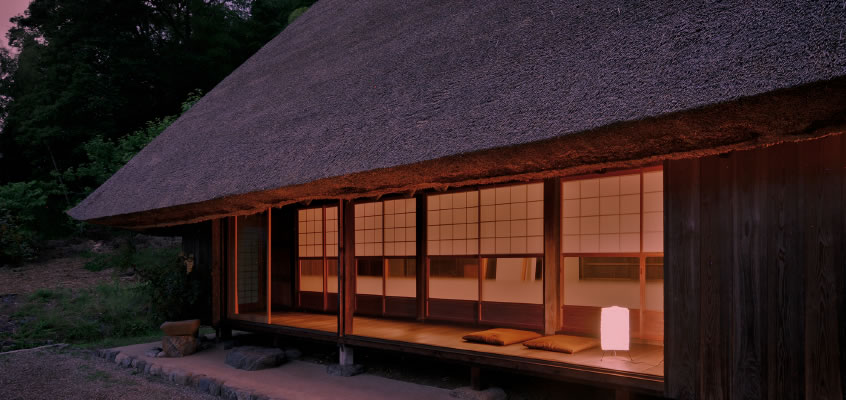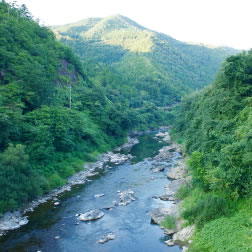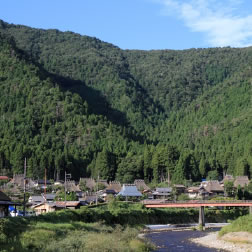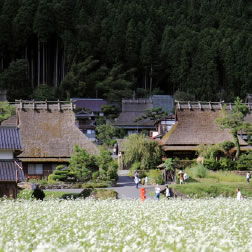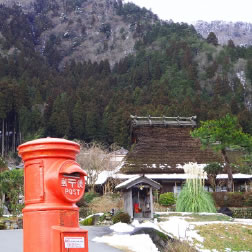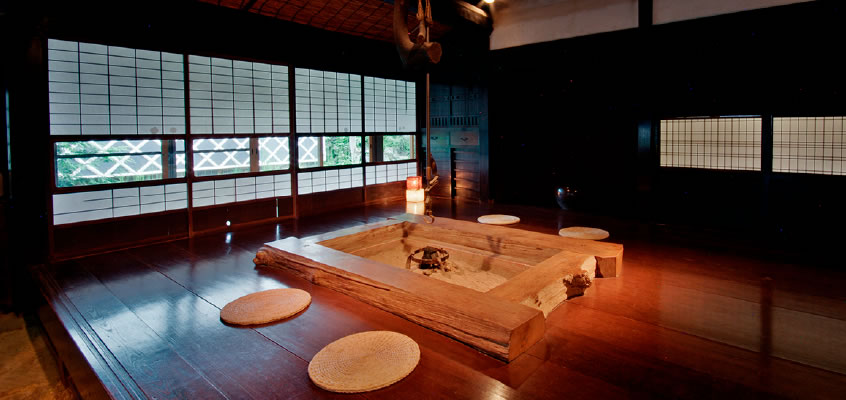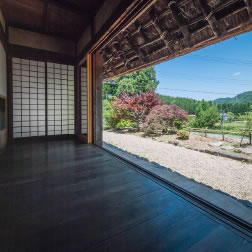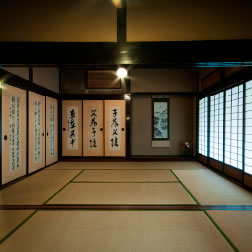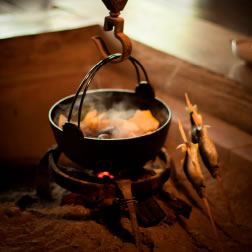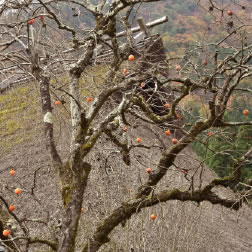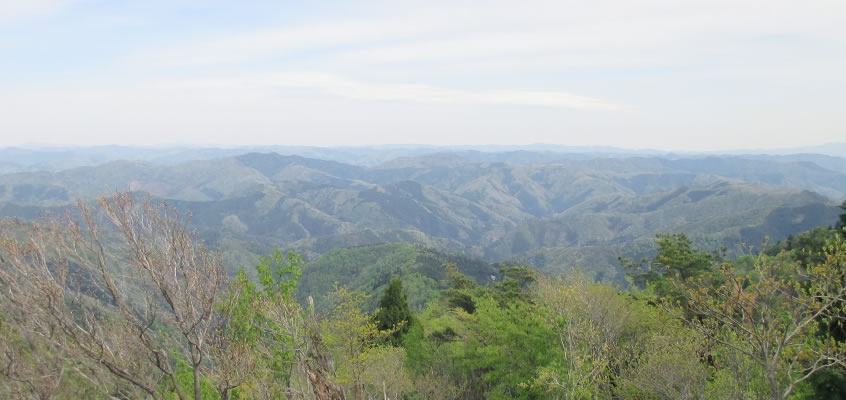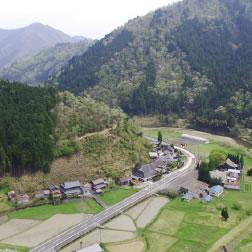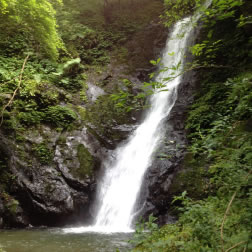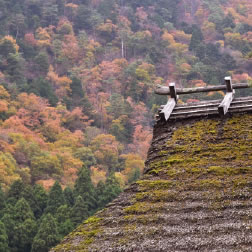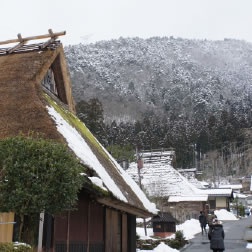Miyama month-by-month
January
It is cold in winter and Miyama gets quite a lot of snow, with some variation between the different valleys. The locals spend much of the winter indoors, preparing for the spring and the busy planting times ahead. If you enjoy snow-covered landscapes, this is a good time to visit and snowshoeing activities are available.
The recommended food of the month is wild boar hotpot.
At night you won’t hear much as this is one of the quietest times of year, when most of nature is hibernating through the cold.
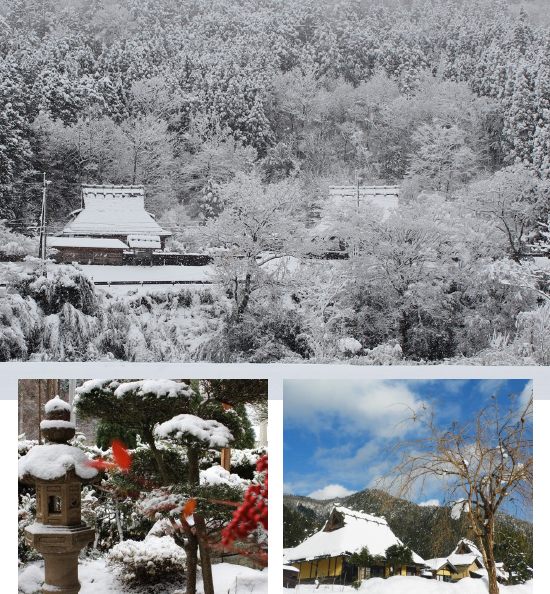
February
In Japan, early February is said to be the coldest time of the year before the temperature gradually starts to rise again. Cold weather systems come down from Siberia and blanket Miyama in white snow.
The days are starting to get longer, although it’s a slow transition and winter is not yet ready to let go.
The recommended food of the month is Sukiyaki hotpot.
If you are lucky you’ll hear owls gently hooting in the night as they begin to look for a mate ahead of the coming spring.
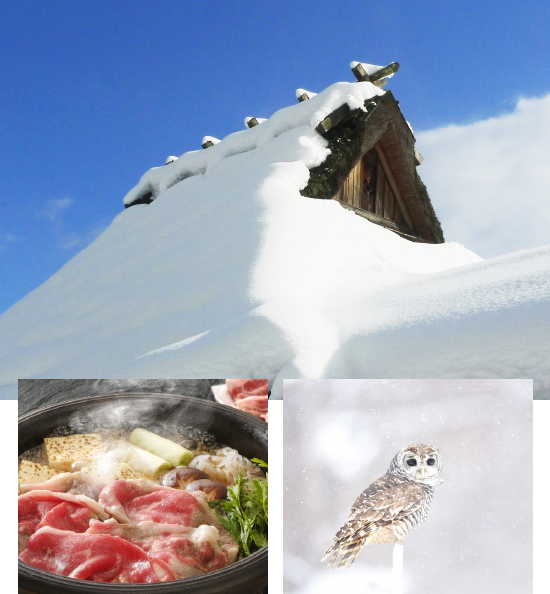
March
The spring finally starts to make its presence felt and the first noticeable change to the scenery is the white flowering trees in the mountains; these are wild magnolias (Kobushi) and although you have to hike to get close to them, they have a delicate sweet fragrance.
Edible plants begin to appear, like mugwort (Yomogi) and butterbur (Fuki), and most people in Miyama will pick some from their garden for dinner – these edible wild plants are the food of the month and when fried as Tempura they are delicious.
They are also said to clean the body and have many health benefits.
Lots of the birds start singing their spring songs in March and it brings an air of excitement after the cold quiet winter.
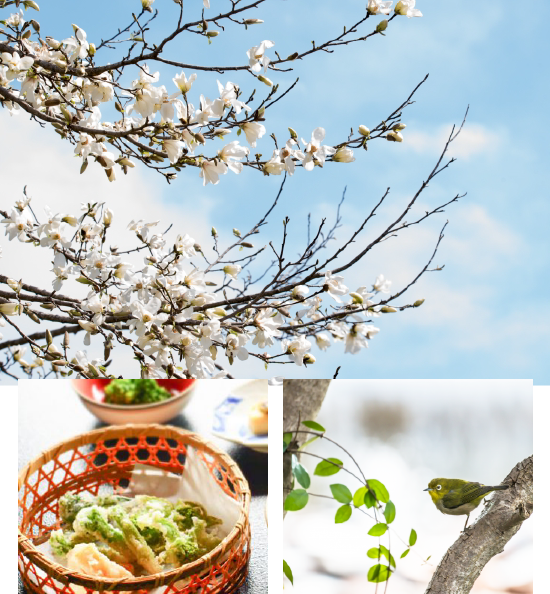
April
Now spring is in full flow and although in Kyoto City the cherry blossom comes in early April, it’s often mid-April by the time it arrives in Miyama. This is because of the lower temperatures in the mountains.
Picnicking and riding a bicycle is the best way to enjoy the cherry blossom here in Miyama, and we recommend the bicycle tours.
More edible plants like horsetails (Tsukushi) appear and the locals are often out picking them in the mornings.
The preparations for the rice-planting season are also in full swing and it’s a busy time for the farmers of Miyama.
Towards the end of April, the frogs begin to awaken from their winter slumber and can be heard croaking here and there.
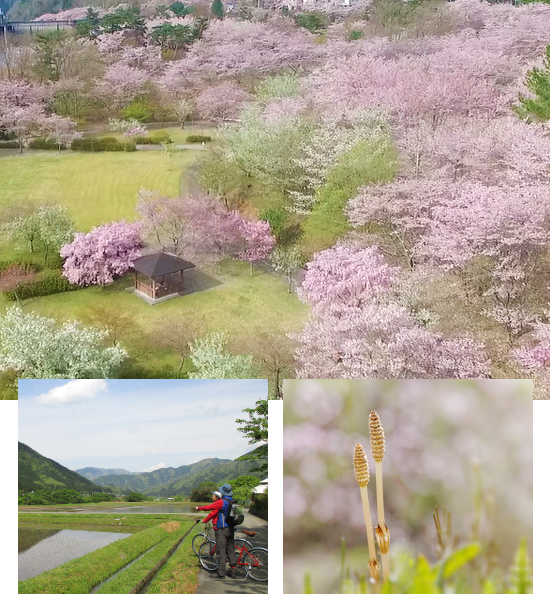
May
Most farmers plant their rice during May and there is also a rice-planting festival at Miyama’s thatched village (Kayabuki no sato). As the temperatures rise, the trees put out their new leaves and fill the mountainsides with light green hues. This season is called fresh green (Shinryoku) and it’s a great time to visit Japan and Miyama; it’s not yet too hot and humid and you also avoid the many cherry blossom tourists. The fresh green is very beautiful and the frogs get into full chorus in great numbers. This night-time performance is quite remarkable.
Temaki sushi is a great food to enjoy at this time of year.
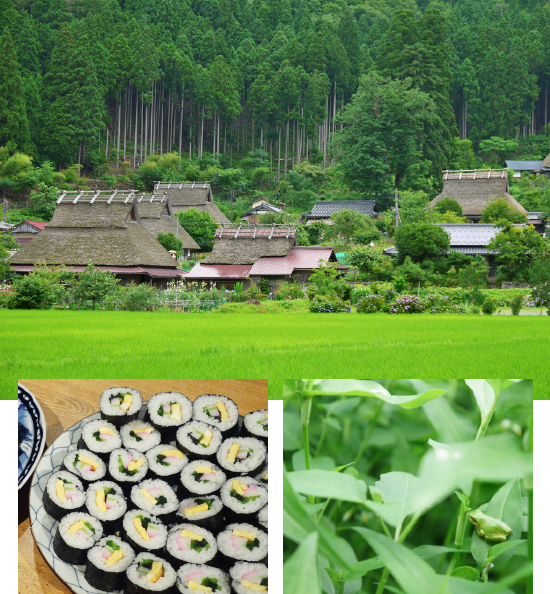
June
Typically June begins with wonderful weather and blooming flowers like hydrangea and gardenias. Fireflies begin to make their appearance and they are still abundant in the small tributary streams around Miyama. This is one of the quietest times of year for tourism in Japan, so it’s a good time to make a quick visit. Watch out though because the rainy season generally arrives around the middle of June and humidity soars, along with pretty regular rain.
Hoba gohan is a seasonal dish made from rice and beans wrapped in a plant leaf that is said to keep it fresh.
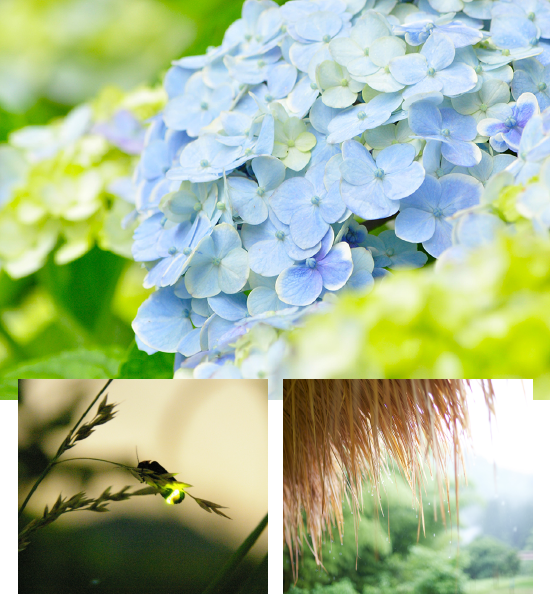
July
The rainy season gives way to summer, and in Japan that means it’s hot and humid with big billowing clouds in magnificent blue skies. It’s often above 30 degrees centigrade and very humid. It is a beautiful time of year though and summer in Miyama is much cooler than the big cities. This is the time of year for swimming in the river (there are designated swimming spots; please consult with a local guide before you swim) and taking it slow during the middle of the day when it’s hot.
The cicada start their cacophony of space invader-like noises and clicks and this can be heard night and day.
Saba zushi (mackerel sushi) is in season and it is a speciality of the Miyama region since it lies on the ancient route between Fukui, where the mackerel is caught, and Kyoto where it was taken to be sold.
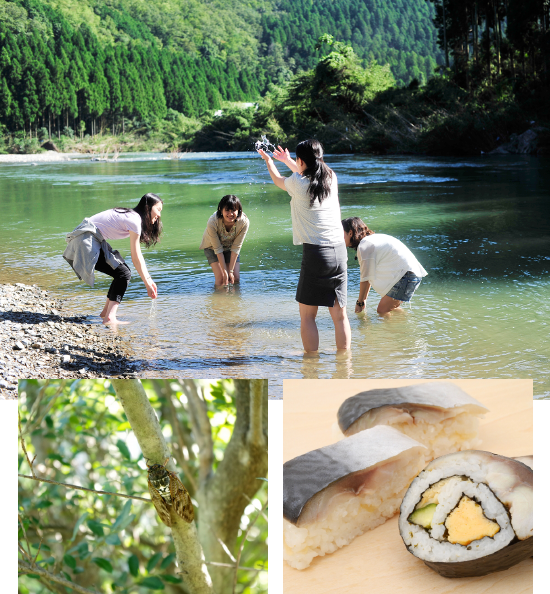
August
The summer heat peaks in August and it’s also the holiday and festival season. The rice starts to grow tall in the fields, and tomatoes and cucumbers ripen in the allotments of the Miyama residents. Fishing is popular in this season and grilled sweetfish (Ayu) is on the menu along with Nagashi soumen, which is a thin noodle that is soaked in cool water and then put in a bamboo water slide. You have to try and fish out the noodles with chopsticks as they pass by on the bamboo slide.
After Obon in mid-August (a festival in which the Japanese honour their ancestors with music and a special dance), you can feel the weather begin to cool as autumn starts to knock on the door.
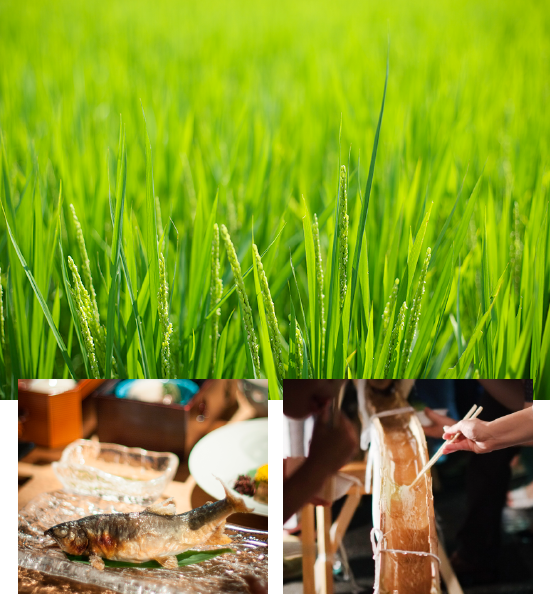
September
The temperature cools and humidity drops, but it’s still very warm and pleasant. The din of the cicada gives way to the gentle sound of autumn crickets and their night chorus really is reminiscent of a symphony. The rice is tall and golden and the harvest begins, so Shinmai or freshly harvested rice is on the menu.
Autumn flowers bloom, like Kinmokusei (fragrant olive) which has little orange flowers and an intoxicating fragrance.
This is one of best times to visit Japan as the number of tourists is very low and the climate is ideal. It’s a great time for cycling around Miyama.
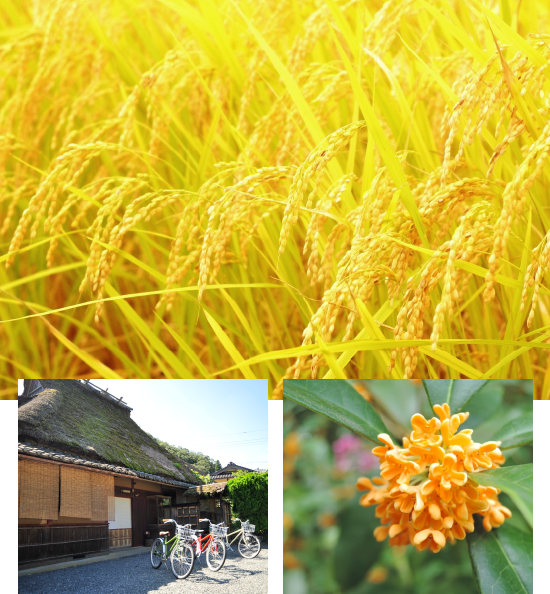
October
The temperature cools and humidity drops, but it’s still very warm and pleasant. The din of the cicada gives way to the gentle sound of autumn crickets and their night chorus really is reminiscent of a symphony. The rice is tall and golden and the harvest begins, so Shinmai or freshly harvested rice is on the menu.
Autumn flowers bloom, like Kinmokusei (fragrant olive) which has little orange flowers and an intoxicating fragrance.
This is one of best times to visit Japan as the number of tourists is very low and the climate is ideal. It’s a great time for cycling around Miyama.
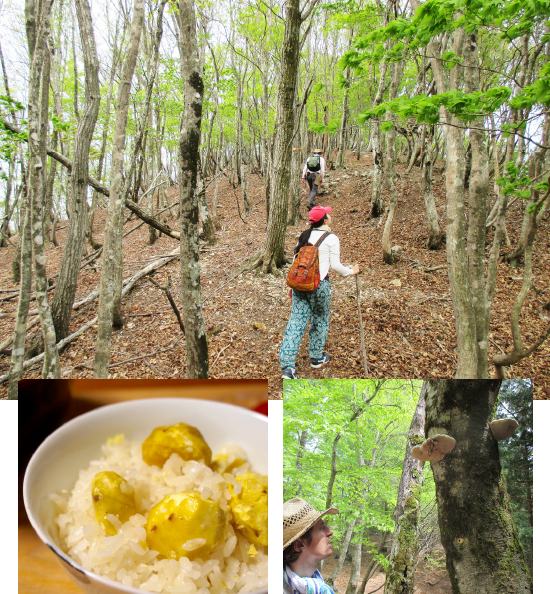
November
The temperature falls further, prompting the trees to start absorbing the nutrients back from their leaves, which causes the autumn colours to appear. This is a gradual process, and in Miyama whole areas of deciduous mountain forest change from green, through a series of brown and rust colours with some more distinctive red and yellow here and there. The colours tend to arrive here sooner than in the city of Kyoto where it’s a little warmer. Orange persimmon trees ripen in abundance and their sweet fruits (Kaki) are a treat; they also attract the attention of the local bears, who climb the trees at night to feast on the fruit. You have nothing to fear from the local Asian black bears, as they are timid vegetarians who like to stay away from people as best they can – having said that, don’t wander off in the mountains without a guide!
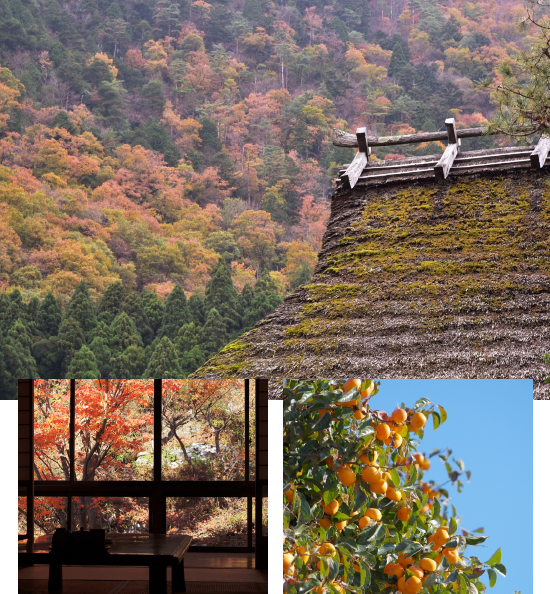
December
The leaves have all fallen from the trees and the landscape is barren and lacking colour until mid-December when Miyama usually gets its first snowfall. The locals are busy harvesting their winter vegetables like radish (Daikon) and cabbage before a deeper blanket of snow covers the ground.
Preparations for New Year’s celebrations are also underway (Christmas is not really celebrated here) and that means Mochi or rice cake-making, which you can see or take part in if you reserve in advance. Freshly steamed rice is crushed in a large stone bowl using a kind of wooden mallet.


